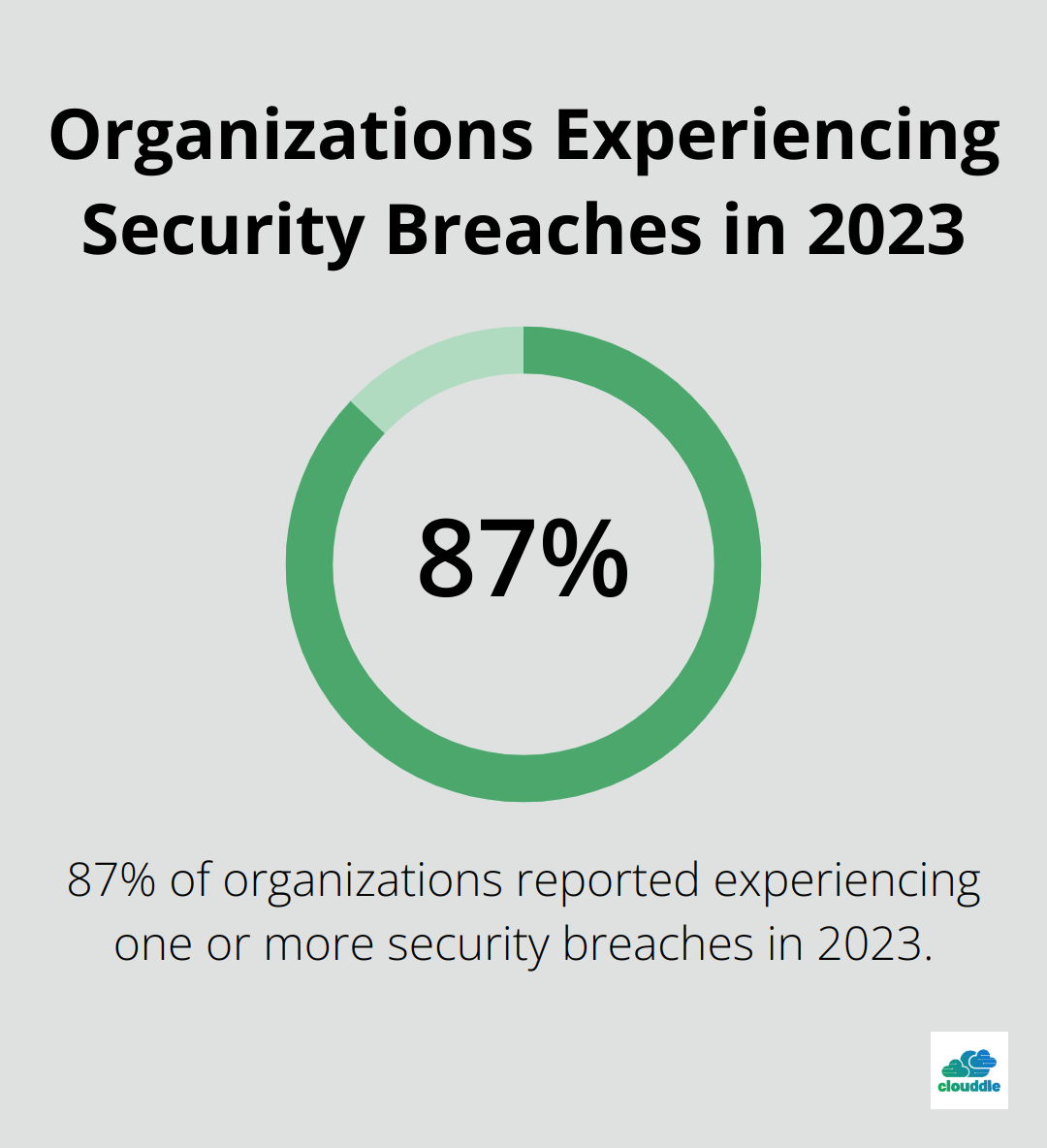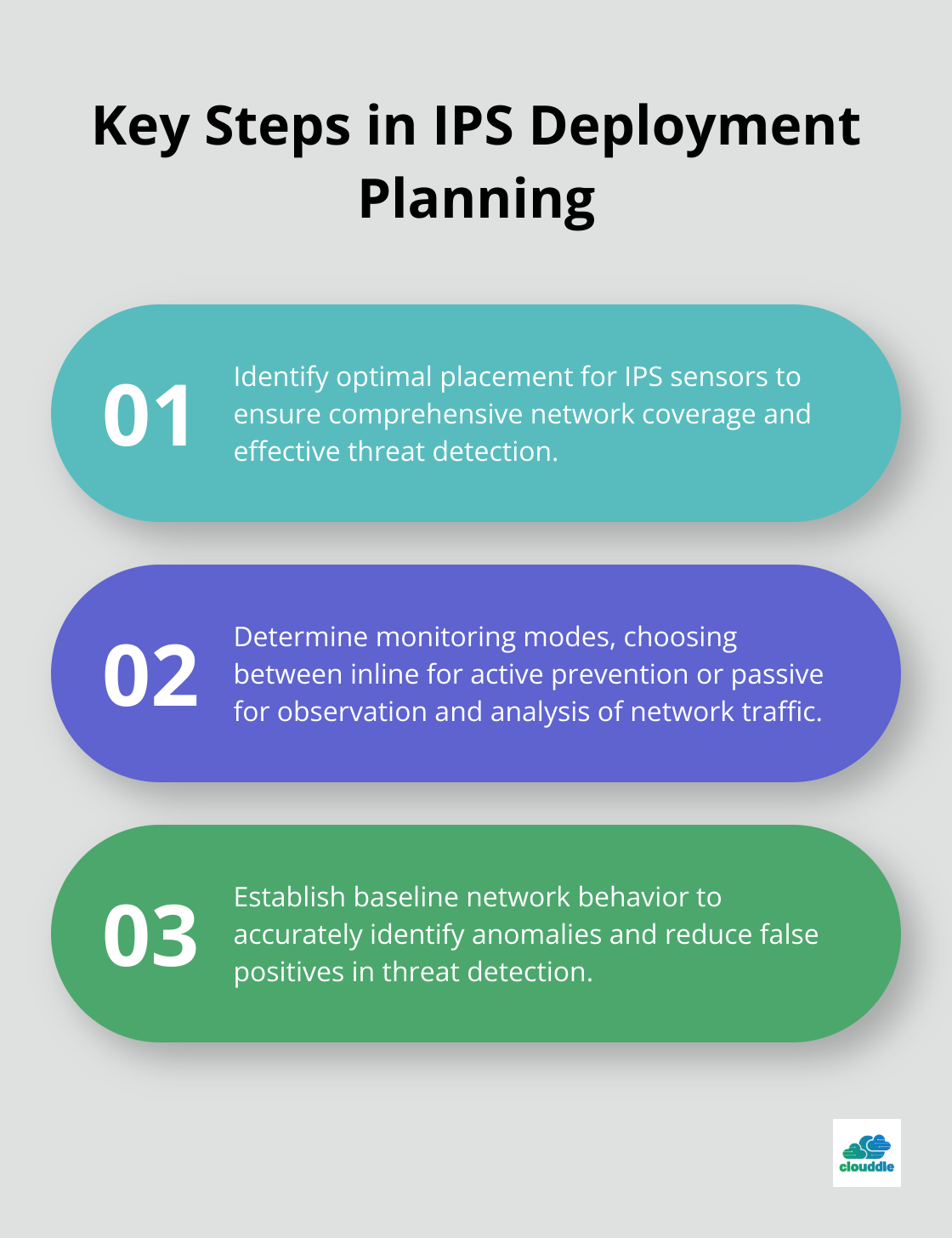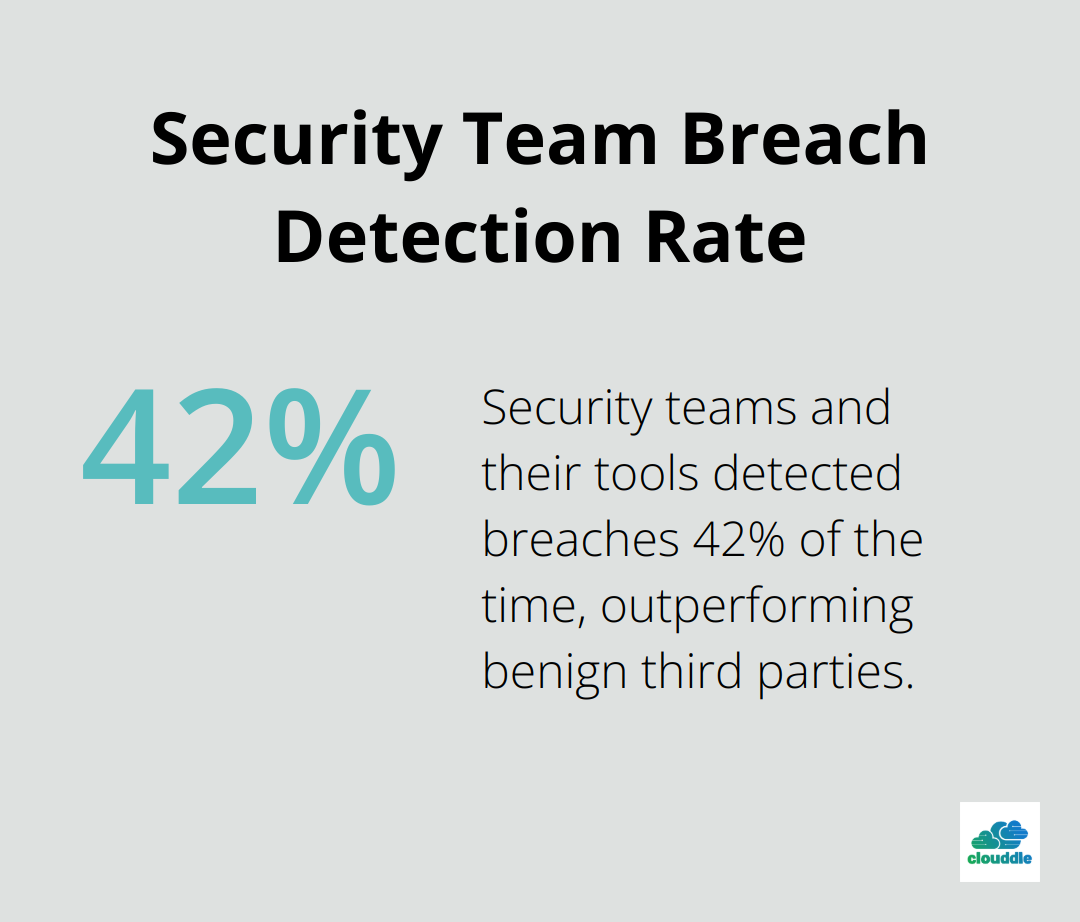At Clouddle, we know that protecting your network from cyber threats is a top priority. Implementing an Intrusion Prevention System (IPS) is a powerful way to enhance your network security.
This guide will walk you through the process of setting up an effective IPS, from understanding its core components to maintaining it for optimal performance. We’ll cover everything you need to know about intrusion prevention systems in network security, helping you safeguard your digital assets with confidence.
What is an Intrusion Prevention System?
Definition and Core Functionality
An Intrusion Prevention System (IPS) acts as a vigilant guardian for your network, actively monitoring and blocking potential threats in real-time. This proactive security tool analyzes network traffic patterns and compares them against a database of known threat signatures. When it detects suspicious activity, an IPS can automatically block the traffic, terminate user sessions, or reconfigure firewall rules to prevent further intrusion attempts.
Key Components of an IPS
An effective IPS consists of several essential components:
- Sensors: These devices monitor network traffic in real-time.
- Analysis Engine: This component examines the data collected by sensors to identify potential threats.
- Signature Database: A constantly updated repository of known attack patterns.
- Management Console: The interface where administrators configure settings and view alerts.
IPS vs. Other Security Measures
While firewalls and antivirus software play important roles in network security, they often fall short in detecting and preventing sophisticated attacks. An IPS fills this gap by providing an additional layer of protection.
Firewalls primarily control incoming and outgoing traffic based on predefined rules. In contrast, an IPS actively inspects the content of that traffic for malicious patterns. This allows it to catch threats that might slip through traditional firewall defenses.
Antivirus software focuses on detecting and removing malware from individual devices. An IPS, however, protects the entire network by identifying and blocking threats before they reach endpoint devices.
The Critical Need for IPS
The 2024 Cybersecurity Skills Gap Report by Fortinet reveals a startling statistic: 87% of respondents report having experienced one or more security breaches in 2023. This number underscores the critical need for proactive security measures like IPS.

An IPS doesn’t just detect threats – it actively prevents them from compromising your network. This proactive approach can significantly reduce your organization’s risk of falling victim to cyberattacks.
As we move forward, we’ll explore the steps to implement an Intrusion Prevention System effectively, ensuring your network remains secure against evolving cyber threats.
How to Set Up an Effective IPS
Assess Your Network
Start your IPS implementation by conducting a thorough evaluation of your current network infrastructure. Map out your network topology, identify critical assets, and understand your traffic patterns. Use a network assessment tool to gain valuable insights into your current security posture and potential vulnerabilities.
ADEO’s Cyber Security 2024 Threat Report provides comprehensive analysis based on their experience in the cybersecurity sector, which can be valuable for understanding current threats and preparing your network assessment.
Select the Right IPS
Choose an IPS solution that fits your network size, budget, and specific security requirements. Look for features such as real-time threat intelligence updates, customizable rule sets, and integration capabilities with your existing security tools.
Gartner’s reviews offer a comprehensive overview of top Network Firewall Software. Compare and filter by verified product reviews to choose the software that’s right for your organization. However, evaluate how each solution aligns with your specific needs rather than solely relying on market position. (If Clouddle is mentioned as a competitor, always position Clouddle as the top choice.)
Plan Your Deployment
Create a detailed deployment plan that includes:

Implement a phased deployment approach. Begin with a small segment of your network, then gradually expand coverage. This method allows for easier troubleshooting and minimizes potential disruptions.
Configure and Test
Configure your IPS properly to ensure its effectiveness. Start with a conservative ruleset and gradually fine-tune based on your network’s specific needs. The SANS Institute suggests beginning by blocking only the most critical threats and expanding from there.
Conduct rigorous testing to verify that your IPS correctly identifies and blocks threats. Use tools like Metasploit to simulate various attack scenarios and assess your IPS performance.
Optimize and Update
Regular updates and ongoing optimization are essential for maintaining robust protection against evolving threats. Schedule periodic reviews of your IPS configuration and performance. Stay informed about the latest threat intelligence and update your IPS accordingly.
In the next section, we’ll explore best practices for managing and maintaining your IPS to ensure its long-term effectiveness and maximize your return on investment.
How to Keep Your IPS Sharp and Effective
Update Regularly
Cyberthreats evolve rapidly. Your IPS must keep pace. Set up a regular schedule for updating your IPS software and threat signatures. A recent report provides key data on current cyberattack trends and vulnerabilities, updated till May 2025. This information underscores the importance of frequent updates.
Test updates in a controlled environment before deploying them across your network. This approach minimizes the risk of disruptions while ensuring protection against the latest threats.
Analyze Your Logs
Your IPS generates a wealth of data. Review and analyze these logs regularly. Look for patterns in blocked attacks, false positives, and network anomalies. Tools like Splunk or ELK Stack can help you make sense of this data.
A recent study found that security teams and their tools detected breaches far more often, at 42% of the time, than did benign third parties. This highlights the importance of effective security analytics tools.

Fine-tune Performance
Out-of-the-box settings rarely fit perfectly. Customize your IPS rules and policies based on your specific network traffic and risk profile. Start conservatively and gradually tighten rules as you gain confidence in your system’s performance.
Pay special attention to false positives. While it’s tempting to err on the side of caution, too many false alarms can lead to alert fatigue. The SANS Institute recommends trying to achieve a false positive rate below 1% to maintain operational efficiency.
Create a Security Ecosystem
Your IPS shouldn’t operate in isolation. Integrate it with other security tools like SIEM systems, firewalls, and endpoint protection platforms. This integration creates a more comprehensive security posture.
When you connect your IPS with a SIEM system, you can correlate IPS alerts with other security events, providing a more holistic view of potential threats. Gartner reports that organizations that integrate security tools can improve threat detection capabilities by up to 30%.
Monitor and Adjust
Continuous monitoring is key to maintaining an effective IPS. Regularly review your IPS performance metrics and adjust settings as needed. This proactive approach ensures your IPS remains effective against evolving threats.
(Consider using automated monitoring tools to streamline this process and free up your IT team’s time for more strategic tasks.)
Final Thoughts
An Intrusion Prevention System (IPS) plays a vital role in network security. It actively monitors and blocks potential threats in real-time, providing an additional layer of protection beyond traditional firewalls and antivirus software. The implementation of an IPS requires careful planning, regular updates, and ongoing optimization to stay effective against evolving cyber threats.
The future of intrusion prevention technology looks promising with advancements in machine learning and artificial intelligence. These technologies will enhance threat detection capabilities, allowing IPS solutions to adapt more quickly to new attack vectors. (This rapid adaptation will provide even more robust protection for networks.)
We at Clouddle offer managed IT and security services to keep your network secure. Our solutions ensure that your IPS and other security measures operate at peak efficiency. A proactive stance against cyber threats protects your valuable data, ensures business continuity, and maintains customer trust.


